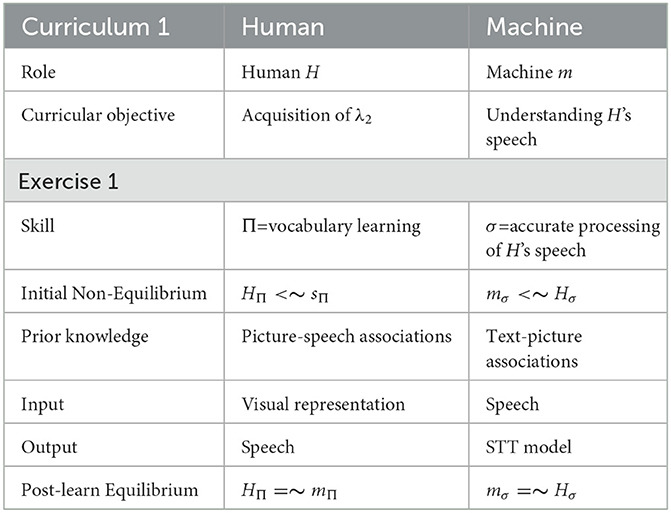baumhaus.digital/Miscellanous/Presentations/AE53/oeb.global/Human-Machine Peer Learning (HMPL): What and Why?/Theory/HMPL
A human-machine peer learning curriculum (i.e., a HMPL-C) is a planned sequence of educational instructions–i.e., a curriculum–which involves:
1. At least one human learner G, H, I, ... which gradually develops her/his/their skill Γ.
2. At least one artificial learner a, b, c, ... which gradually develops its/her/his/their skill σ.
3. Activities by means of which G (resp. H, I, etc.) develops her/his/their skill Γ, which directly involve knowledge and competence exhibited by a (resp. b, c, etc.).
4. Activities by means of which a (resp. b, c, etc.) develops her/his/their skill σ, which directly involve knowledge and competence exhibited by G (resp. H, I, etc.).
1. At least one human learner G, H, I, ... which gradually develops her/his/their skill Γ.
2. At least one artificial learner a, b, c, ... which gradually develops its/her/his/their skill σ.
3. Activities by means of which G (resp. H, I, etc.) develops her/his/their skill Γ, which directly involve knowledge and competence exhibited by a (resp. b, c, etc.).
4. Activities by means of which a (resp. b, c, etc.) develops her/his/their skill σ, which directly involve knowledge and competence exhibited by G (resp. H, I, etc.).

0 Axones
[Impressum, Datenschutz, Login] Other subprojects of wizzion.com linkring:
teacher.solar
puerto.life
gardens.digital
giver.eu
fibel.digital
refused.science
kyberia.de
naadam.info
udk.ai
baumhaus.digital